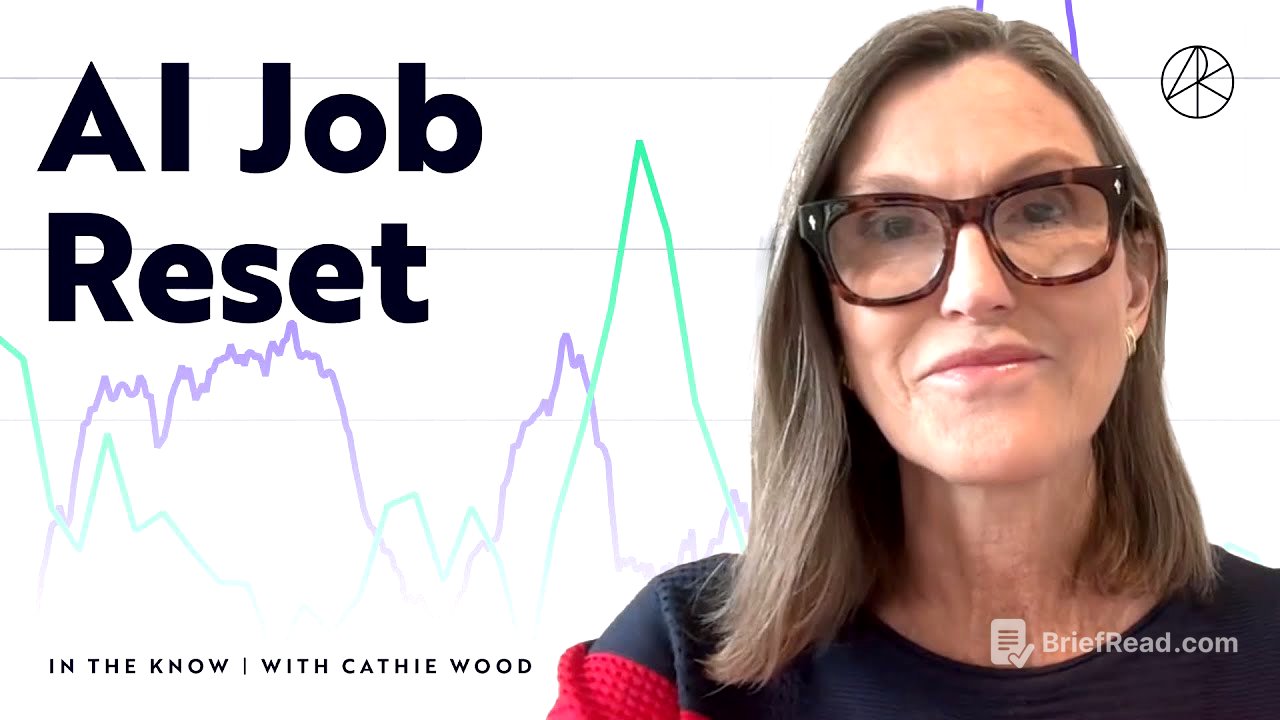TLDR;
This video discusses the current economic landscape, highlighting a rolling recession that is expected to transition into a rolling recovery driven by productivity gains and technological advancements, particularly in AI. It covers fiscal and monetary policies, employment trends, and market indicators, suggesting that inflation will be lower than anticipated due to productivity increases. The analysis includes insights on housing market dynamics, the impact of tariffs, and the potential for economic growth spurred by innovation and strategic policy adjustments.
- Rolling recession nearing its end, transitioning to recovery.
- Productivity and AI driving economic growth and lower inflation.
- Employment trends showing signs of weakness, particularly in entry-level jobs.
- Housing market facing challenges but potential boost from crypto integration.
Introduction and Overview [0:00]
The speaker begins by outlining the key topics to be covered: fiscal policy, monetary policy, economic indicators, and market indicators. The central argument is that the economy has been experiencing a rolling recession for the past three years, with increasing signs of softening, especially in the consumer and housing sectors. High interest rates are particularly impacting the housing market, though prices are beginning to decrease. Employment statistics are also starting to reflect weakness, which is expected as the rolling recession nears its end.
Understanding the Rolling Recession [1:30]
The speaker anticipates a transition from a rolling recession to a rolling recovery, which is expected to gain momentum from the end of the current year into the next. This recovery will be significantly influenced by productivity and real GDP growth. A key factor will be lower-than-expected inflation due to productivity gains. Contrary to the common belief that higher growth leads to higher inflation, historical data suggests that higher growth increases productivity, which acts as a strong anti-inflationary force. The deflationary effects of new technologies, especially AI, will further amplify this trend.
Employment Trends and Indicators [5:45]
The employment report is described as providing "something for everyone," but a deeper analysis reveals underlying weaknesses. Non-farm payrolls showed an increase, but a significant portion was in government jobs, with state and local government employment rising while federal employment fell slightly. Private payrolls showed a smaller increase. The birth-death ratio, which estimates new businesses versus business closures, also plays a role, and excluding this factor could indicate negative employment growth. The ADP report, which is more focused on small and medium businesses, showed negative employment figures. Average hourly earnings are behaving well, and if productivity increases as expected, underlying inflation related to labor could fall below 2%.
Fiscal Policy Insights [12:10]
The discussion covers the current legislative efforts in the House, focusing on tax rates and spending. The speaker emphasizes the importance of maintaining current tax rates. While acknowledging concerns about government spending and deficits, the speaker suggests that innovation and growth are key to addressing the deficit. The speaker believes that fostering growth is the most effective way to reduce the deficit.
Monetary Policy and Market Indicators [18:25]
M2 money supply growth has accelerated, but it remains low compared to historical levels. There are signs that monetary policy is too tight, as indicated by the inverted yield curve, particularly when comparing the 90-day T-bill rate to the 2-year yield. The speaker notes that Federal Reserve Chairman Powell has hinted at potential easing if not for tariffs. Despite tariffs implemented in April, recent statistics suggest minimal impact on the economy's pricing structure, with overall indices behaving well and CPI, PPI, and PCE deflator figures surprising on the low side.
The Role of AI in Economic Growth [25:40]
The speaker highlights the impact of AI on employment, particularly entry-level jobs. Internal projects at ARK using natural language programming demonstrate how AI can customize solutions and potentially disrupt software as a service. College graduates are finding it more difficult to secure jobs, with unemployment rates rising in this demographic, likely due to AI. The speaker advises those seeking or changing jobs to focus on AI and follow experts in the field to enhance their skills.
Housing Market Dynamics [32:15]
The housing market is described as very weak by historical standards. A recent directive from the FHFA allowing the use of cryptocurrency held on centralized exchanges like Coinbase to qualify for mortgages could open up the housing market, especially for young people who are holding cryptocurrencies. New home inventory is reaching levels seen during the global financial crisis, and homebuilders are subsidizing loans. New home prices have been slipping, and existing home prices are also starting to fall. These price declines will likely feature prominently in the CPI and personal consumption deflator, potentially leading to periods of deflation.
Conclusion and Future Outlook [40:00]
The speaker concludes by reiterating the expectation that inflation will resolve on the low side. Despite concerns about the dollar's performance, it remains strong relative to many other currencies. Commodity prices are relatively flat, though copper prices have risen, driven by demand from electric vehicles and data centers. The speaker notes that the equity market is climbing a wall of worry and is broadening out, making it healthier. Overall, the speaker is optimistic about the future, anticipating a transition from a rolling recession to a productivity-driven boom with lower-than-expected inflation.








![[목돈연구소] 인생 선배, 퇴직한 직장인들이 후회하는 일은 무엇일까? 후회 없는 인생을 위한 길라잡이 I 지식편의점 230702(일)](https://wm-img.halpindev.com/p-briefread_c-10_b-10/urlb/aHR0cDovL2ltZy55b3V0dWJlLmNvbS92aS83YXAtUHdPZlZoYy9ocWRlZmF1bHQuanBn.jpg)
